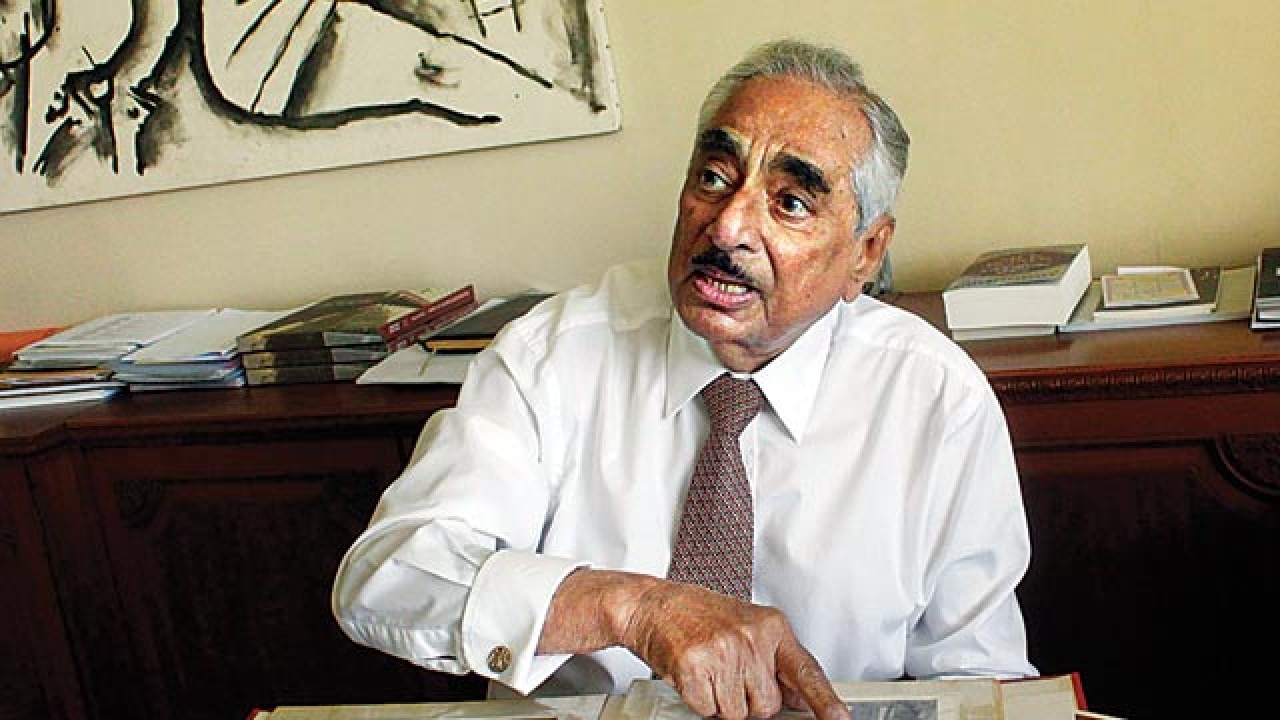
Architect Iftikhar M Kadri pioneered sea-facing terrace-garden apartments in India with his very first architectural project, Brighton Apartments. Other projects, the cascading The Oberoi Bangalore, the ornamented Taj Krishna Hyderabad, the latticed Nehru Centre, the perforated Haj House, the louvered Shivsagar Estate where IMK Architects, his firm is located, reflect his fascination with Mughal architecture. Before the book The Architecture of IM Kadri by Kaiwan Mehta hits stands this week, this 86-year-old ex-sheriff of Mumbai, founder of a school for underprivileged girls in Ahmedabad and father-in-law to actor Suniel Shetty, speaks to Ornella D'Souza about his practice.
(Laughs) I assumed the 'BA Civil' tag on architects' nameplates was the qualification to become an architect. Within 15 days of the course, I realised I was in the wrong place. But my elder brother convinced me to get the degree. I met businessman Phirozshah Dubash at a dinner party in Bombay. He gave me the opportunity to design my first building, Brighton, on Napean Sea road, in 1960. It was an instant success. With Brighton, I was also the builder and sold the flats! This experience and my training as engineer, helped me grow as an architect. So I'm an engineer but have no degree in architecture. And neither my clients or I felt I needed one.
People told me I was mad to start my own practice with big firms such as Gregson, Batley and King and Master Sathe & Kothari already in business. "You have no godfather, no degree, do you know against who you are competing? Have you seen their offices?"... But I took it slow.
Well, my family home in Ahmedabad, is a beautiful haveli, Diwan House, with carvings, arches, jaali, motifs, chhajjas, verandahs, courtyard gardens. I spoke Urdu at home and studied Urdu literature at my school, Jamia Millia Islamia, whose structure, by architect Karl Malte von Heinz, I found unique.
Nehru Centre. Now, I don't name my buildings. Like humans, my buildings are recognised by their personality. So Islam Gymkhana has no signboard and the governor's bungalow, Sahyadri, has a small plaque solely for postal purposes. Similarly, my design for the Nehru Centre spells Nehru minus a plaque or his statue. India was largely agrarian when the aristocrat Panditji came in power. I couldn't imagine him sitting on the ground. So the Centre is 45ft off the ground (Nehru on a pedestal), raised by a garden, (India's agricultural base). Nehru held India together, despite linguistic and religious problems ripping it apart. The struggle reflected in the structure spiraling upwards to indicate the sky's the limit. All that Nehru envisaged for India – art, culture, tradition, science, research... this building holds.
That's right. The solid-and-hollow jaali is not totally porous. It gives the idea something's missing.
I wanted the structure to appear like a pebble taken out of the sea... When I showed the drawing to the craftsman, he protested, "Sanghemarmar ki tauhin hai (This is an insult to marble)." I asked him if the dilapidated marble buildings in Rajasthan look beautiful even today. When he said yes, I said, "Assume this (Otters Club) is already dilapidated. Create a small portion of the building. If you don't like it, we'll use marble your way." He made it, we viewed it from a distance, and he said, "Bura nahi lagta hai, saab". Then, he put his heart into the project and created a masterpiece.
It only got me recognition. You see, two things have spoilt Bombay: the Rent Act and the Repair Board. As Sheriff, I wanted to address these issues. I was already on a state committee for redevelopment and even submitted a report on how to rebuild Bombay in ten years. Had this been implemented, Mumbai would not have a single jhopad patti today.
Whatever the style of architecture, four rules must be met – fulfil the client's requirement, visualise in a way your client has not envisaged, assign at least one element to make the building noticeable on the cityscape and do not repeat the design.
Whenever Heinz visited Jamia to oversee the upcoming university buildings, I followed him like a puppy. Seeing him at work made me want to become an architect at age eight! I'm most influenced by Oscar Niemeyer for his Brazilia. His concrete flows like poetry – beautiful, smooth and functional. Kahn is an original thinker. I don't consider Corbusier an architect, though. His buildings are crude and overpower, especially the ones in Chandigarh. Certain works of monumental scale make the viewer feel insignificant. But the Taj Mahal makes you feel like its fourth dimension. That is what my works to do.